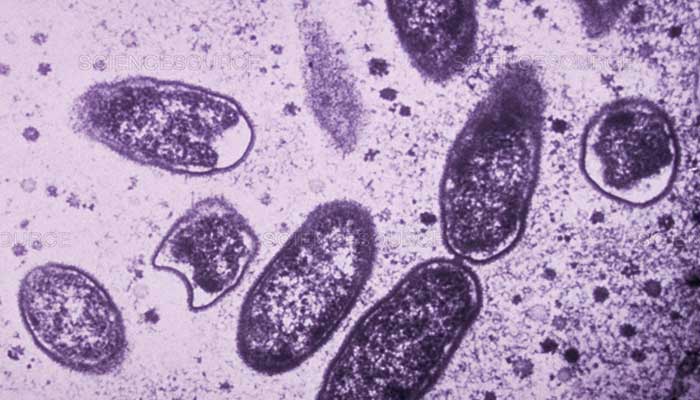Interesting Science Videos
Laboratory diagnosis of Rickettsia rickettsii
Specimen: Skin biopsies, serum
Direct detection method
- Although Rickettsiae stain poorly with Gram stain, they can be stained with Giemsa or Gimenez stains.
- Direct detection of R. rickettsii antigen in skin biopsy specimens of the rash from infected patients by direct fluorescent antibody test using the specific anti-rickettsial antibodies is a rapid and specific method for confirming diagnosis of Rocky Mountain spotted fever.

Culture
- R. rickettsii can be isolated in embryonated egg or tissue cultures.
- However due to associated risk of infection, cultures are rarely attempted.
Serology
- Definite diagnosis of Rocky Mountain spotted fever is made by employing serological tests that detect R. rickettsii immunoglobulin G (IgG) antibodies.
- The Weil-Felix test, which is a non specific in nature, considered as an archaic test is still in use in few laboratories.
- It relies on the agglutination of certain strains of the enteric bacterium Proteus vulgaris, which shares cross-reactive antigens with certain rickettsiae.
- The serology test that is considered the reference method is the microimmunofluorescence (MIF) test.
- The test detects antibodies directed against outer membrane proteins (species-specific) and the LPS antigen.
- The sensitivity and specificity of MIF is high, with diagnostic levels of antibodies generally detected in the second week of illness.
- Indirect immunofluorescent antibody (IFA) test and enzyme linked immunosorbent assay (ELISA) are new serological tests that are used for early diagnosis of the condition.
- Demonstration of a fourfold rise in antibody titers between acute and convalescent sera or demonstration of antibody titre of 1:64 or more in a single serum is diagnostic of the disease.
- These antibodies are detected in the serum 2–3 weeks after the onset of the disease and remain in the serum after a very long period of time.
Molecular diagnosis
- Detection of rickettsial DNA or Omp genes by PCR is more rapid than isolation and allows specific identification.
- PCR has been used to detect R. rickettsii DNA in the skin biopsy specimens of the rash with good sensitivity and high specificity.
- A variety of gene targets are used, including gene sequences for outer membrane proteins (OmpA, OmpB), the 17-kDa lipoprotein, and citrate synthase.
Other testing
- Leukopenia is present initially, then mild leukocytosis; patients usually have a normal WBC count.
- Platelets counting may show thrombocytopenia.
- Sodium levels may be decreased in more severe disease.
- Alanine aminotransferase (ALT) and aspartate aminotransferase (AST) may be slightly elevated.
- Mild cerebrospinal fluid pleocytosis with monocyte predominance.
Treatment of Rickettsia rickettsii
- Tetracycline (doxycycline) is the drug of choice.
- Although the tetracyclines are generally contraindicated for pregnant women and young children, this antibiotic is recommended for all patients with suspected rickettsial disease because it is the most effective antibiotic and inadequately treated disease is associated with a high morbidity and mortality.
- Chloramphenicol is an alternative choice.
- Fluoroquinolones, such as ciprofloxacin are effective against R. rickettsii.
Prevention and control of Rickettsia rickettsii
- The use of protective clothing, insect repellents, avoidance of tick-infested areas, personal hygiene, prompt removal of attached ticks are the best preventive measures against R. rickettsii infection.
- No vaccine is available against the Rocky Mountain spotted fever.
